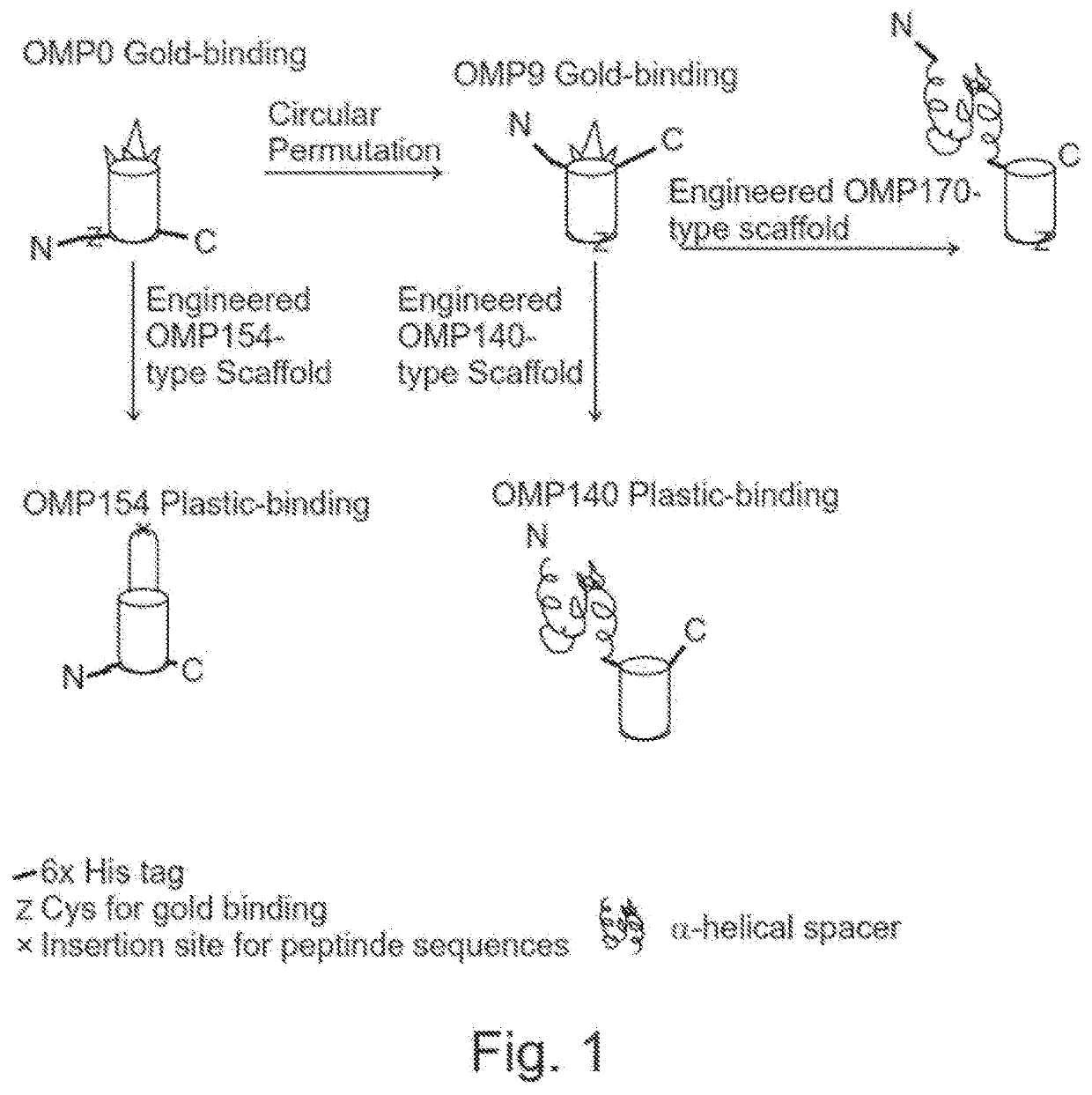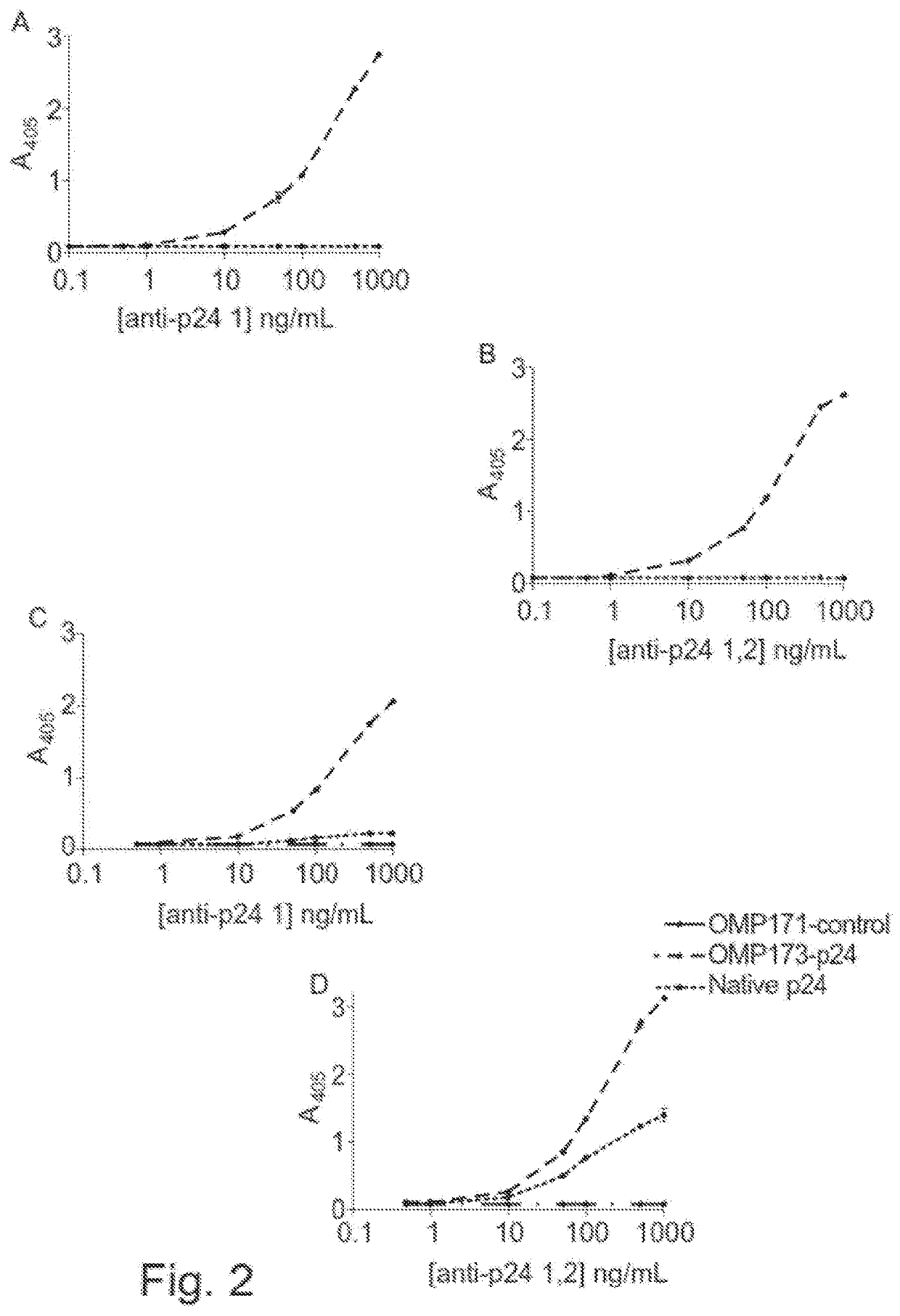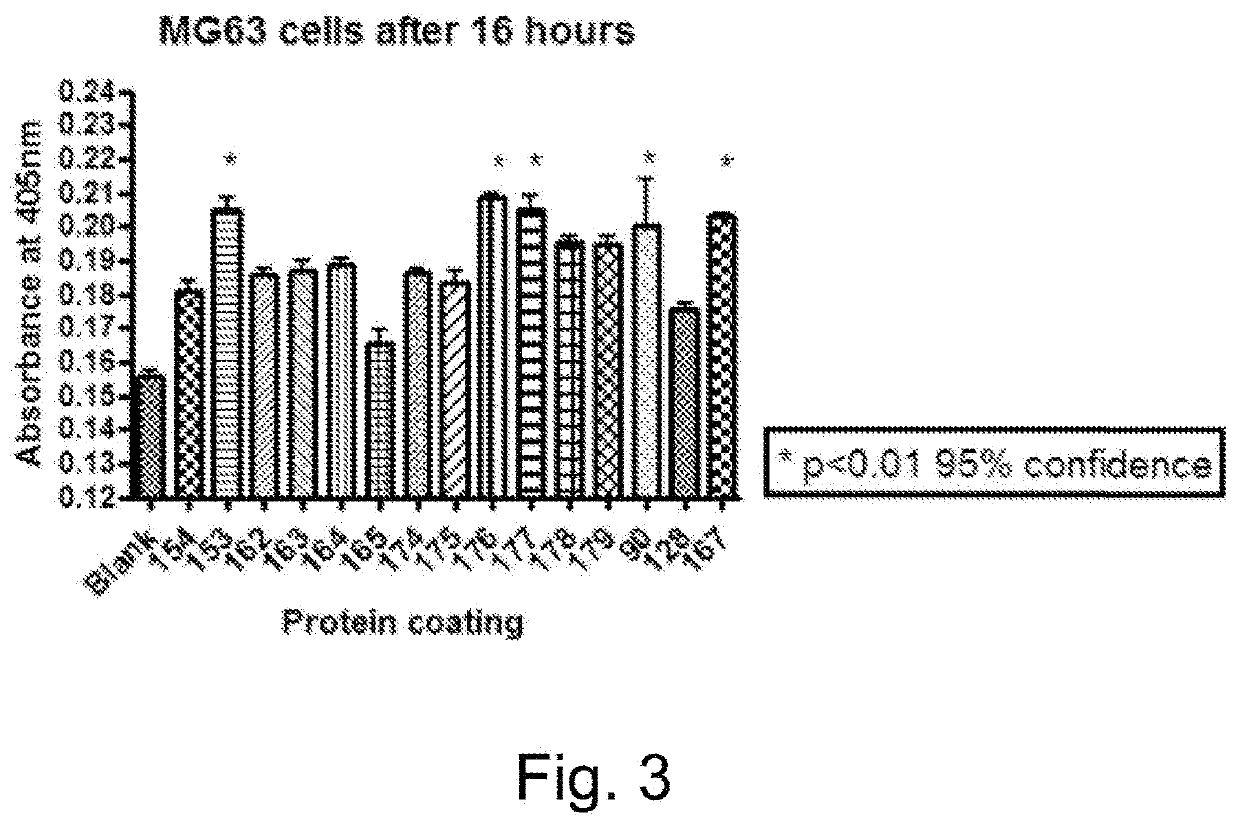Protein coated polymeric substrate
a polymer substrate and polymer technology, applied in the direction of depsipeptides, polypeptides with localisation/targeting motif, instruments, etc., can solve the problems of little quantitative or orientation control, inability to fully or partially denature proteins, and inability to effectively bind analytes, etc., to achieve the effect of increasing the volume of solution and reducing the protein concentration
- Summary
- Abstract
- Description
- Claims
- Application Information
AI Technical Summary
Benefits of technology
Problems solved by technology
Method used
Image
Examples
examples
[0306]In order to investigate the binding and function of our β-barrel based proteins to polymers the following approaches have been adopted:
1. Immunoassay for Detection of Protein on Polymers
[0307]Comparison of OMP18 (two IgG-binding B domains of SPA fused to OmpA) and native Staphylococcus aureus Protein A (five IgG-binding domains).
Detection of FLAG-tagged OMP proteins on various polymers
[0308]Detection of human HIV p24 antigen fused to OMP scaffold with specific antibody and comparison to native antigen
2. Cell Culture
[0309]Comparison of cell attachment to OMP0 scaffold protein and various constructions containing ECM protein motifs or growth factors displayed on the OMP scaffold.
Binding of IgG to Native Protein A or Protein A Domains Anchored with βeta-Barreled Scaffold
[0310]For any scaffold to be effective as an anchor for a second independent protein, it must improve the function of that protein when adsorbed to a surface. To examine this for the beta-barreled scaffold, experi...
PUM
| Property | Measurement | Unit |
|---|---|---|
| molecular weight | aaaaa | aaaaa |
| Δ | aaaaa | aaaaa |
| concentration | aaaaa | aaaaa |
Abstract
Description
Claims
Application Information
 Login to view more
Login to view more - R&D Engineer
- R&D Manager
- IP Professional
- Industry Leading Data Capabilities
- Powerful AI technology
- Patent DNA Extraction
Browse by: Latest US Patents, China's latest patents, Technical Efficacy Thesaurus, Application Domain, Technology Topic.
© 2024 PatSnap. All rights reserved.Legal|Privacy policy|Modern Slavery Act Transparency Statement|Sitemap



